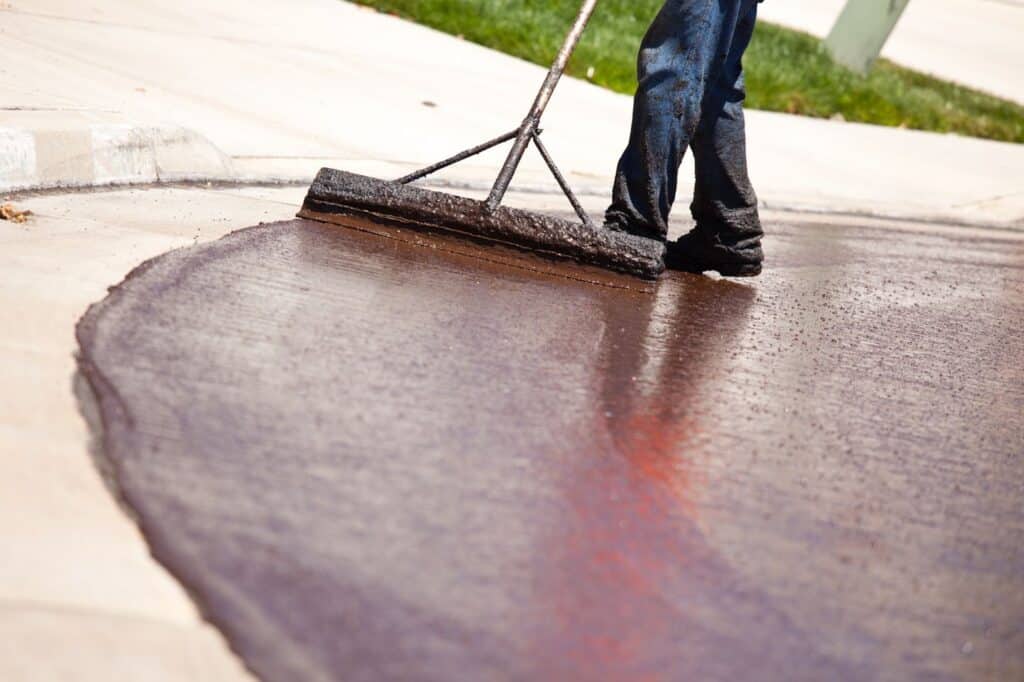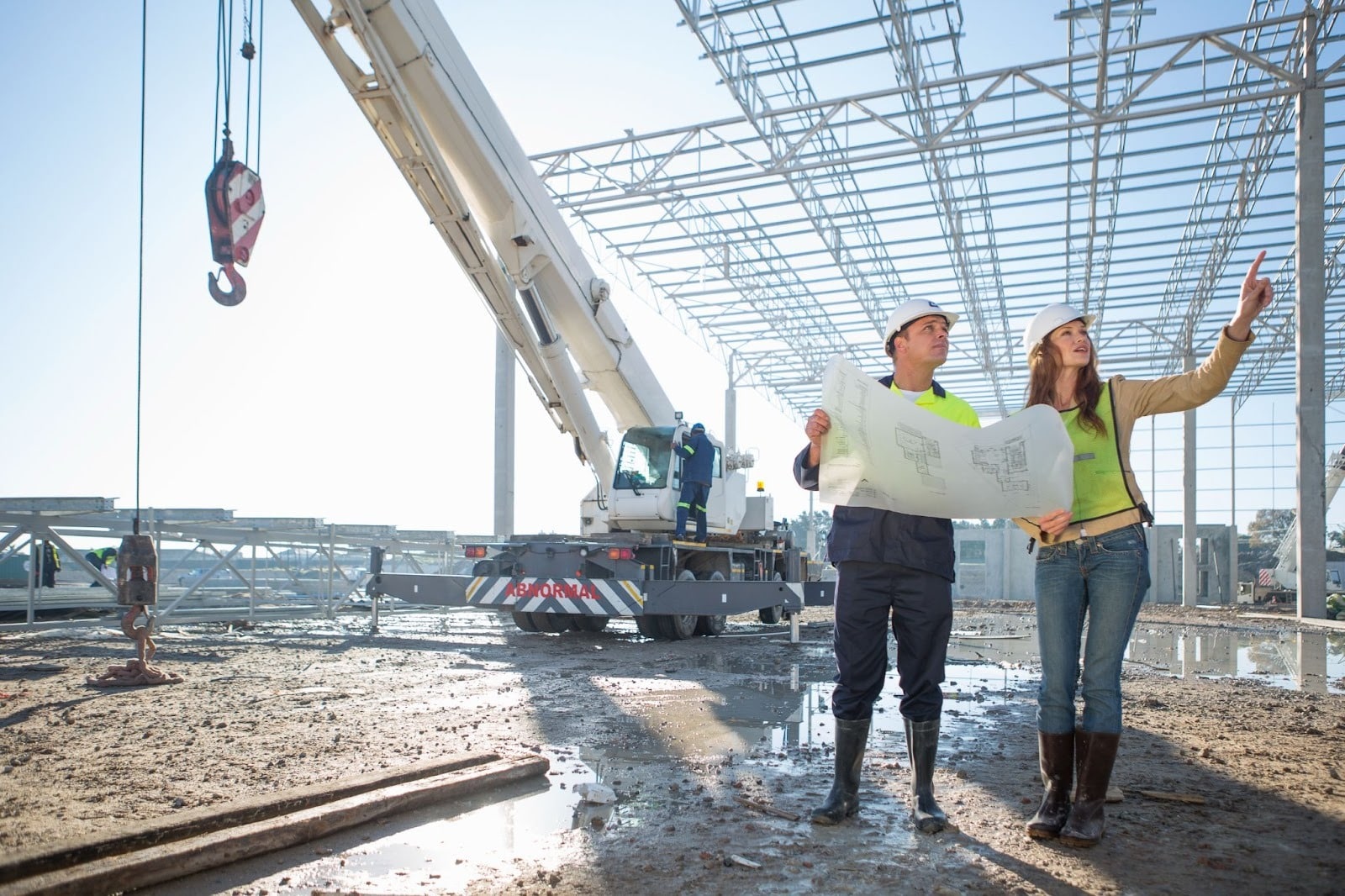Driveways bear the brunt of constant vehicle weight, changing weather, and time. Cracks and erosion start small but grow quickly when ignored, leading to costly replacements. Water, UV exposure, and shifting soil silently weaken even the toughest surfaces. Taking preventive steps through proper driveway repair and maintenance keeps your property safe, smooth, and visually appealing for years.
Understanding Driveway Damage and Early Warning Signs
Driveway damage begins when weather, traffic, or poor drainage weakens the base layer. Once cracks form, water seeps below the surface, causing more structural issues. Early detection helps residential property owners repair minor flaws before they spread. Recognizing warning signs ensures your driveway stays stable and reliable for longer.
How Weather and Water Impact Your Driveway
Weather changes create constant pressure on driveway materials. During winter, water freezes inside cracks, expands, and forces them wider. When it thaws, it leaves gaps that collect more moisture, repeating the cycle. Heavy rain causes runoff that erodes the soil underneath, softening the driveway base and leading to uneven areas. In summer, direct sunlight breaks down asphalt oils, making the surface brittle. Without protection, these combined elements reduce durability and cause visible damage faster.
Common Indicators of Driveway Damage
Driveways often show early signs of distress that many overlook. Small cracks, fading color, and uneven patches suggest underlying problems. Puddles that linger after rain indicate poor drainage, which weakens the foundation. Loose gravel or crumbling edges signal erosion along the sides. Discoloration from oil or chemicals also weakens the top layer, allowing moisture to penetrate deeper. Addressing these issues quickly prevents widespread cracking and surface collapse.
Comparing Driveway Materials and Lifespan
Different driveway materials age and perform differently under pressure and weather. Understanding their strengths and weaknesses helps homeowners plan proper repair schedules. Each material type responds uniquely to temperature changes, drainage, and vehicle weight. Knowing these differences ensures the right repair approach and avoids using methods that shorten lifespan.
Lifespan and Performance of Common Driveway Materials
Asphalt driveways generally last 20 to 25 years when sealed every few years. Concrete surfaces stretch beyond 30 years but need frequent crack sealing to prevent expansion breaks. Paver driveways, while more expensive initially, can last over 40 years since damaged sections can be individually replaced. Gravel driveways have shorter lives but are easier to maintain. Choosing the right material depends on budget, climate, and maintenance commitment. Matching care routines to the material’s characteristics leads to longer-lasting, more cost-efficient results.
Key Factors That Influence Driveway Lifespan
Several conditions beyond material choice determine how long a driveway lasts. Proper installation, including a compacted subbase and correct grading, prevents early cracking and water damage. Local climate plays a major role, as areas with frequent freeze-thaw cycles require flexible materials that absorb expansion stress. Drainage quality also matters since trapped water weakens the foundation over time. Routine cleaning and sealing preserve surface strength by preventing erosion and oxidation. Regular inspections and minor repairs keep any driveway material performing at its best for decades.
Driveway Repair Techniques for Stronger Surfaces
Effective driveway repair begins with proper surface preparation and quality materials. Skipping cleaning or using weak fillers often leads to repeated damage. Repairing cracks, sealing gaps, and resurfacing extend the lifespan of any driveway. Each process works together to restore strength and prevent future erosion.

Cleaning and Preparing the Driveway Surface
A clean surface helps repair materials bond effectively. Dirt, oil, or plant growth reduces the effectiveness of fillers and sealants. Pressure washing removes debris, while degreasers break down oil spots that weaken adhesion. Allow the surface to dry completely before applying any product to avoid moisture trapping. A wire brush clears weeds from cracks, preventing future spread; a properly prepared base results in more substantial, smoother, and longer-lasting repairs.
Filling Cracks and Sealing Gaps
Crack repair is a key step in preventing future driveway damage. Small to moderate cracks can be filled using asphalt or concrete fillers designed for home use. For deeper gaps, hot-pour sealants or professional-grade compounds provide a tighter bond. After filling, smoothing the surface prevents water from settling. Once the filler dries, applying a seal coat locks out moisture and UV rays. This method strengthens weak spots and improves surface appearance.
Resurfacing for Long-Term Driveway Protection
Resurfacing involves adding a new asphalt or concrete layer over the existing surface. This process renews both appearance and strength without full replacement costs. It fills minor imperfections and adds a protective layer that resists cracking. Resurfacing offers a cost-effective fix for driveways with widespread wear but a solid foundation. The added layer also improves water resistance, helping prevent erosion below. Properly resurfaced driveways look new and perform better under daily use.
Preventive Maintenance for Driveway Longevity
Routine maintenance keeps cracks and erosion from worsening. Simple actions like sealing, cleaning, and checking drainage protect your driveway year-round. Preventive care reduces repair costs and extends the surface life significantly. Homeowners who maintain regularly see fewer structural problems and better property value.
Sealing Your Driveway Regularly
Sealcoating defends the surface from water, sun, and chemical damage. Asphalt driveways should be sealed every two to three years, while concrete benefits from a protective coating every few years. The best time for sealing is during mild, dry weather to allow even curing. A new seal coat restores color, smoothness, and flexibility. Neglecting this step leads to early cracking and fading. Regular sealing keeps your driveway looking clean and lasting longer.
Managing Drainage and Water Flow
Good drainage protects a driveway’s foundation from erosion. Standing water weakens the surface and causes cracks to spread. Installing trench drains or adjusting the slope directs water away from the base. French drains also help reroute runoff into safer areas. Keeping gutters clean prevents overflow that damages edges and corners. Maintaining proper drainage safeguards the structure and keeps repairs minimal over time.
Seasonal Care and Weather Protection
Weather changes put stress on any driveway material. Avoid using rock salt in winter, which corrodes concrete and creates cracks. Instead, use calcium chloride or sand for traction. Shovel snow carefully using plastic tools to prevent scratches. Avoid parking heavy vehicles in one place for too long in summer to prevent indentations. Inspecting after each season helps identify minor issues before they worsen. Consistent care throughout the year preserves both strength and appearance.

Knowing When to Hire Driveway Repair Professionals
Some driveway problems require more than simple fixes. Professional services are necessary when cracks deepen, surfaces sink, or erosion spreads. Experts use high-grade materials and tools to assess and restore stability. Knowing when to get help can save money and effort in the long run.
Signs That DIY Repairs Won’t Work
DIY kits can handle light repairs but fall short for structural issues. Large potholes or areas that shift under pressure mean the base layer is compromised. Cracks that reopen after patching signal deeper water damage. Professionals use industrial sealants and compacting tools that create lasting results. They also evaluate soil conditions and drainage before starting repairs. Hiring experts prevents repeated failures and ensures a long-lasting, even surface.
Choosing a Reliable Driveway Repair Contractor
Finding a trustworthy driveway repair contractor protects your investment. Always confirm licenses, insurance, and local references before committing. Reliable contractors explain the repair process, estimate costs, and offer material options. However, you should also request written warranties for completed work to guarantee durability. A professional should also inspect drainage and soil stability during assessment. Transparent communication and accountability ensure quality repairs that last.
Comparing Driveway Repair and Replacement
Repairing may seem cheaper, but replacing heavily damaged driveways can be more practical. When cracks cover more than a third of the surface, replacement restores long-term value. Asphalt resurfacing costs less initially but may need frequent touch-ups. Full reconstruction rebuilds the foundation, preventing future collapse. Concrete driveways follow a similar rule when structural cracks extend deep below the surface. Weighing both options helps homeowners choose the most cost-effective solution.
Driveway Repair and Maintenance Strategies
Strong driveways last because of consistent care and attention. Reinforcing edges, keeping surfaces clean, and managing weight distribution prevent recurring problems. Every small action contributes to preserving the structure and curb appeal. A strategic approach to maintenance guarantees a stable surface for years to come.
Reinforcing Driveway Edges and Borders
Driveway edges weaken first due to repeated vehicle pressure. Adding concrete curbs or compacted gravel provides support and prevents cracking. Decorative edging also enhances the driveway’s appearance while strengthening its structure. Roots from nearby trees can lift or break edges, so trimming or installing barriers helps protect against damage. Maintaining solid borders prevents water from seeping underneath and eroding the base. This simple reinforcement step keeps the entire driveway intact longer.
Maintaining Driveway Cleanliness and Surface Health
Clean driveways resist water and chemical damage. Regular sweeping and washing remove oil, dirt, and leaves that trap moisture. Degreasers can treat stubborn stains without harming the surface. Moss and weeds should be removed immediately to prevent them from widening cracks. Clean surfaces also provide better traction and maintain a fresh look. Routine cleaning enhances both durability and curb appeal.
Parking and Weight Distribution Habits
Heavy vehicles create surface stress when parked repeatedly in one spot. Rotating parking areas spreads pressure evenly and prevents depressions. Avoid driving near edges where structural support is weaker. For heavier vehicles like RVs, use thicker reinforcement or support pads. Balanced weight distribution keeps the driveway from warping under strain. Smart parking habits reduce long-term repair costs and protect overall stability.
Preserve Driveway Durability With Timely Repair Steps
Every small repair decision shapes how long your driveway lasts. Addressing cracks, stains, and drainage issues before they grow prevents expensive reconstruction later. Consistent upkeep strengthens the surface, keeps your property safe, and maintains its polished look year-round. A durable driveway isn’t just a surface but a reflection of foresight and responsible ownership that pays off every single day.
Your driveway deserves expert care built on experience and precision. Read the JM Caulking & Construction Services LLC blog to learn practical ways to protect your property.




